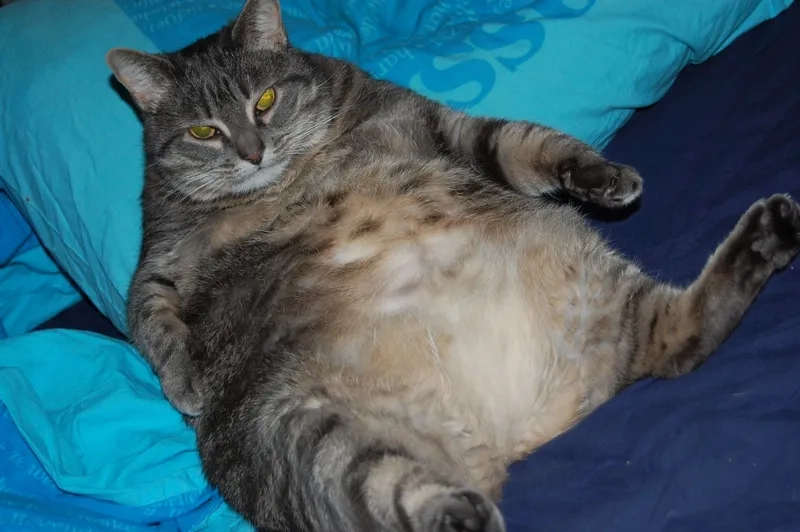Handbook
What Should I Feed My Cat? Top 10 Best Foods Recommended By Experts
What Should Cats Eat to Stay Healthy, Live Longer, and Thrive?
This is a question that concerns many cat owners—especially first-timers. A proper nutrition plan not only gives cats a shiny coat and a strong body, but also helps prevent diseases and extend their lifespan.
So, what are the best foods for cats? Here are 10 veterinarian-recommended foods that are nutritious, safe, and easy to incorporate into your cat’s daily meals.
Why Choosing the Right Food for Your Cat Is So Important
Cats are obligate carnivores, meaning their bodies are built to digest and absorb nutrients from animal-based proteins, not plants—unlike dogs or humans. Without enough animal protein, taurine, vitamin A, fatty acids, and essential minerals, cats can suffer from serious health issues, including:
Malnutrition, weight loss, and weakened immune system
Digestive issues such as vomiting or diarrhea
Dry, dull coat and excessive shedding
Severe diseases like blindness, liver failure, or kidney disease
That’s why feeding your cat the right types of food, tailored to their specific digestive needs, is essential to ensure they grow strong and stay healthy.
Top 10 Best Foods for Cats (According to Vets)
1. Chicken – High in Protein, Easy to Digest, Great for All Breeds
Lean chicken is one of the best protein sources for cats. It helps build lean muscles and boost immunity. Chicken is also rich in vitamin B6, niacin (B3), iron, and phosphorus—crucial for metabolism and nervous system health.
How to serve: Boiled or steamed, unseasoned, chopped into bite-sized pieces. Can be mixed with soft rice or pâté.
Frequency: 3–4 times per week.
2. Salmon – Rich in Omega-3s for a Healthy Skin and Coat
Salmon is a superfood for cats. It contains high levels of omega-3 fatty acids (DHA & EPA) that reduce inflammation, enhance skin health, and support brain and heart function. It’s also a great source of vitamin D and digestible protein.
How to serve: Lightly cooked, thoroughly deboned. Never feed raw to avoid parasites.
Frequency: 1–2 times per week.

3. Liver (Chicken or Beef) – Great for Blood, Eyes, and Immunity
Liver is packed with vitamin A, iron, zinc, and folate—excellent for blood production, nerve function, and vision. It’s especially beneficial for growing kittens and nursing mothers.
How to serve: Boiled or steamed, finely chopped, mixed with rice or pâté. Do not feed raw.
Frequency: 1–2 times per week (avoid overfeeding due to vitamin A toxicity risk).
4. Eggs – Promote Healthy Coat, Muscle Growth, and B-Vitamins
Eggs are a complete protein, providing all 9 essential amino acids. They also contain biotin and riboflavin, which improve your cat’s coat and overall vitality.
How to serve: Fully cooked, chopped, mixed with food. Never feed raw eggs.
Frequency: 1–2 times per week.
5. Cat Pâté – Nutritionally Balanced and Palatable
Canned cat pâté usually contains the right ratio of meat, organs, taurine, vitamins, and minerals tailored for cats of different ages. Ideal for picky eaters, seniors, or sick cats.
The Pro-Pet VN cat pâté line is nutritionally complete—perfect for keeping your cat energetic and healthy every day.
How to serve: Ready to eat. If stored in the fridge, reheat slightly before feeding.
Frequency: Can be fed daily, combined with dry kibble or fresh meat.
6. Dry Cat Food – Convenient and Helps Clean Teeth
High-quality dry kibble is balanced with added taurine, vitamin A, E, zinc, and essential fatty acids. Chewing kibble helps reduce plaque buildup and promotes dental health.
How to serve: Choose kibble suitable for your cat’s age and activity level. Always provide fresh water nearby.
Frequency: Daily, paired with wet food or fresh protein.
7. Carrots & Pumpkin – Aid Digestion and Prevent Constipation
While cats don’t digest vegetables like humans do, small amounts of soft-cooked veggies such as carrots or pumpkin can offer soluble fiber, improving stool quality.
How to serve: Steamed and mashed, mixed into main meals.
Frequency: 1–2 times per week, not more than 10% of total diet.

8. Plain, Unsalted Cheese – Provides Calcium and Protein
Cheese contains calcium, protein, and vitamin B12, which support bone health and the nervous system. However, many cats are lactose-intolerant, so only feed small amounts of lactose-free, low-salt cheese.
How to serve: Crumbled and mixed with meals, or used as a training treat.
Frequency: Once a week, a few small pieces at a time.
9. Lean Beef – Builds Muscle and Boosts Energy
Beef is rich in iron, zinc, and B-vitamins—excellent for producing red blood cells and supporting active cats. It’s ideal for cats that are very active or used for breeding.
How to serve: Fully cooked (no seasoning or frying), chopped into small bites.
Frequency: 2–3 times per week.
10. Wet Food – Boosts Hydration and Kidney Health
Cats often don’t drink enough water, so wet food is a great way to increase hydration. It’s also easier to digest and more flavorful—ideal for kittens, senior cats, sick cats, or picky eaters.
How to serve: Alternate with dry food during the day. Use within 24 hours after opening.
Frequency: 1–2 meals per day, depending on age and diet plan.
⚠️ Foods to Avoid
Never feed your cat the following: onions, garlic, chocolate, small bones, raw milk, or heavily seasoned food. These can cause serious health issues.

